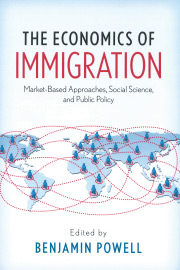U.S. companies are rethinking whether to continue sourcing garments from Bangladesh in the wake of the tragic collapse of the Rana Plaza garment factory that killed hundreds of workers on April 25. If they do so, most Bangladeshi garment workers will be worse off than they are today.
Tragedies such as this naturally provoke emotional reactions. But reason and perspective, rather than emotion, are needed when deciding how to respond.
A house fire that kills a family in the United States is also tragic. But no sane person would recommend that the rest of us move to caves until all houses have been certified as fire proof. We mitigate some risks and accept others, recognizing that the benefits outweigh them.
The same is true in Bangladesh, where some 4,500 garment factories employ approximately 4 million workers. In the grand scheme of things, they are better off with the factories than they would be without them; the benefits outweigh the risks.
In fact, compared to other opportunities in Bangladesh, the garment industry pays reasonably well. As I discuss in my forthcoming book, Sweatshops: Improving Lives and Economic Growth, while 77 percent of Bangladeshis live on less than $2 a day—the international poverty standard—and 43 percent live on less than $1.25 a day, workers at the much-demonized Bangladeshi “sweatshops” average more than $2 a day. Granted, that’s not a lot. But it’s more than they would earn elsewhere.
U.S. companies, of course, are concerned that their images will be tarnished if they’re associated with unsafe factories. Nike’s vice president of sustainable business said that Nike was concerned about working conditions and “decided to reduce our Bangladesh footprint” as a result. Unfortunately, if U.S. companies abandon these factories, hundreds of thousands of garment workers could lose their jobs and be thrust into worse alternatives.
The Rana Plaza collapse was not the first such tragedy. A fire last November at another factory in Tarzeen killed 112 workers,
So what’s the proper solution? Scott Nova, executive director of an organization called the Worker Rights Consortium, argues for improved safety standards, rather than abandoning shop. But we need to recognize that safety is not free, and some workers—as well as consumers, ultimately—will pay a price.
As an economic matter, employers are largely indifferent as to how their labor costs are balanced—that is, whether the compensation consists of wages, the administration of safety standards, health care benefits, or vacation time. A cost is a cost. Workers, on the other hand, do care about the mix of compensation. When workers are poor, they want most of their compensation paid in wages, because they are trying to feed, clothe, and shelter themselves and their families.
When activists insist that companies invest more in safety, what they are doing, in effect, is overriding the preferences of low-income workers.
As part of the research for my book, I surveyed Guatemalan workers in firms where the National Labor Committee had raised red flags and called for improved safety standards. More than 95 percent of the workers we surveyed were unwilling to give up any pay for increased safety.
Economic development, rather than legal mandates, drives safety improvements. When productivity and wages increase, workers demand and receive more safety.
In his study of the U.S. industrial revolution, economist Price Fishback of the University of Arizona found that “most [safety] regulations appear to have codified existing practices” that had already occurred because of economic development. When regulations ran ahead of industry practice, they were largely ignored.
The Rana Plaza factory collapse is a human tragedy on a mammoth scale. It’s also a symptom of Bangladesh’s low level of economic development, which cannot be wished away.
If U.S. businesses reduce their activity in Bangladesh because of accidents like this, it will only slow the very development process that ultimately is the key to achieving safety improvements. Consumers who truly care about the welfare of Bangladeshi workers should encourage companies to source garments from the country, rather than abandon its factories.











